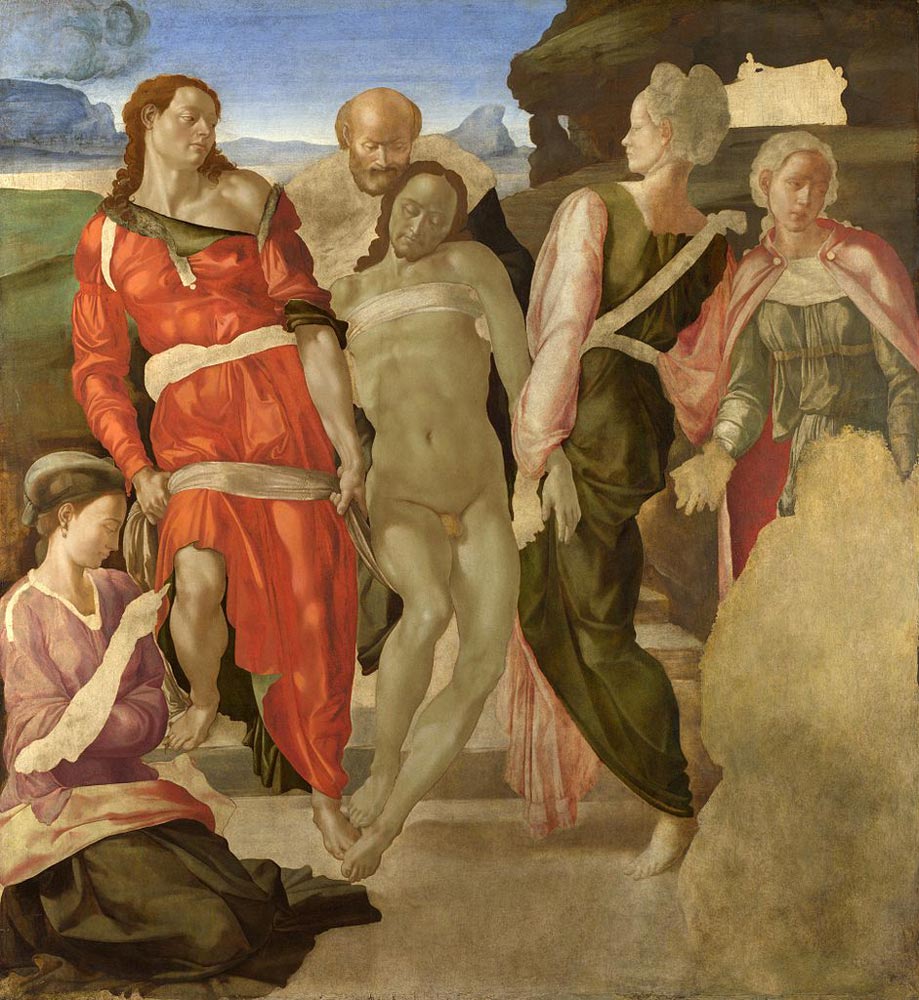| The Entombment | |
|---|---|
 |
|
| Artist | Michelangelo |
| Year | c. 1500-1501 |
| Medium | Tempera on panel |
| Location | The National Gallery, London |
| Dimensions | 64 in × 59 in |
| 162 cm × 150 cm | |
The Entombment is an incomplete painting depicting the placing of Jesus’ body in his garden tomb. It is believed to have been painted in 1500 or 1501 by the Italian renaissance artist Michelangelo Buonarroti. Some scholars believe that the painting may be a direct copy of Michelangelo’s work by one of his art students. This is most likely due to the paintings date confusion, however it is now considered to be one of Michelangelo’s earlier works.
The painting is the commissioned art by the famous Italian Renaissance master artist and for the Saint Agostino church in Rome. However, before his return to Florence Michelangelo returned the funds to the church and the painting remained mostly unfinished.
The panel painting portrays the body of Jesus Christ being carried up the steps which lead to the tomb he is to be laid to rest. The bearded man just behind Christ may be Joseph of Armaithea who gave his tomb for use by the body of Jesus. There is a blank area near the opening of the mouth of the tomb that was supposed to show the top of the steps to the tomb. The bottom right of the painting shows where the Virgin Mary’s figure would have knelt near her son’s feet. The orange-red clad figure with long hair may be that of Saint John with Mary Magdalene at his feet, kneeling. On the right in the painting are two figures whose identities although unknown, are speculated to be those of Nicodemus being the taller of the two and possibly Mary Salome being the second.
The large expanse of the painting hints at some of the figures hovering slightly above. This is undoubtedly due to the fact that the painting was intended to be viewed from below while the viewer was looking up and that the painting was never completed. Yet the far right figure’s inconsistent posture continues to be questionable.